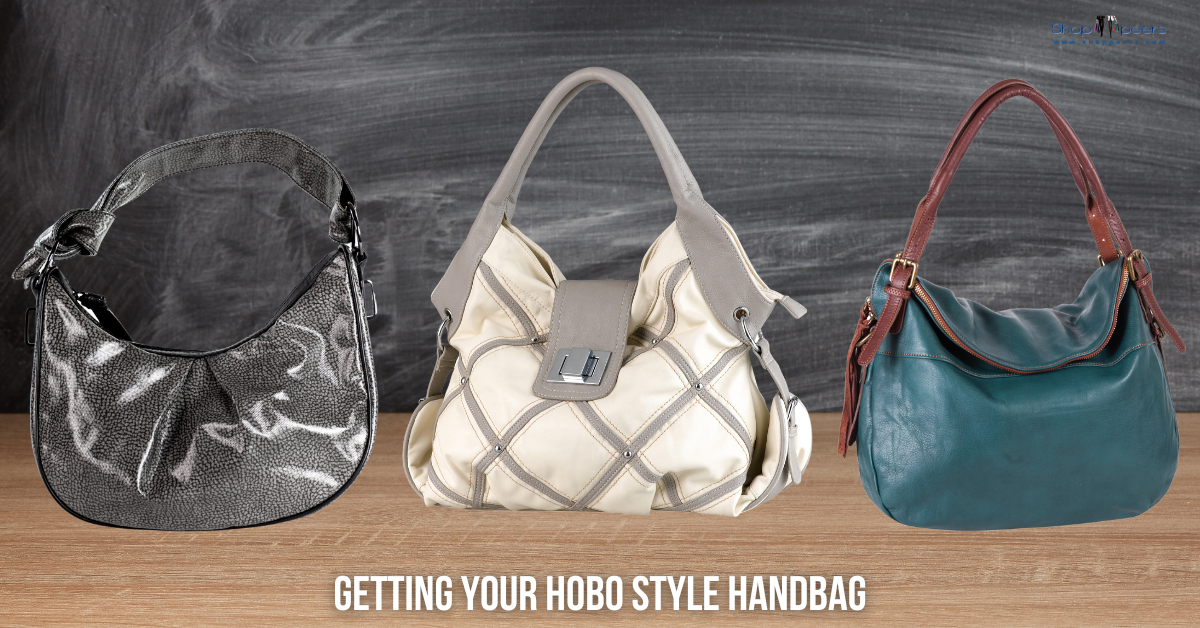When it comes to getting a good night’s sleep, nothing beats the comfort of a high-quality duvet. Whether you’re upgrading your bedding or simply replacing an old, worn-out duvet, knowing how to buy a duvet that perfectly suits your needs is crucial. The right duvet can make all the difference, offering warmth in winter, breathability in summer, and a cozy embrace that makes bedtime something to look forward to. But with so many options on the market, from different fillings to various sizes and tog ratings, the choice can feel overwhelming.
How to buy a duvet that’s perfect for you?
In this guide, we’ll break down everything you need to know about how to buy a duvet that’s perfect for you. We’ll explore the different types of duvets, help you understand what all those technical terms mean, and give you practical tips to ensure you’re making the best choice for your sleep style. So, let’s dive in and discover how to choose a duvet that will have you sleeping soundly in no time!
Understanding Duvet Fillings:
One of the most important factors in choosing a duvet is the filling. The filling not only affects the warmth and weight of the duvet but also its feel and durability. Here’s a breakdown of the most common duvet fillings:
1. Down Duvets
Down is the fluffy, soft underlayer found beneath the feathers of ducks and geese. Duvets filled with down are known for being incredibly lightweight yet highly insulating. Goose down, in particular, is considered premium due to its larger, fluffier clusters, which trap more air and provide superior warmth.
Pros:
- Excellent warmth-to-weight ratio.
- Soft and luxurious feel.
- Long-lasting with proper care.
Cons:
- More expensive than other options.
- May cause allergies in some people.
- Requires regular fluffing and airing out.
Best For: Cold climates or those who prefer a warm, lightweight duvet.
2. Feather Duvets
Feather duvets are similar to down but include more of the outer feathers, which are firmer and less insulating than down clusters. Feather duvets are heavier and tend to be less expensive than down.
Pros:
- Heavier, offering a snug, comforting feel.
- More affordable than pure down.
- Good insulation.
Cons:
- Feathers can poke through the fabric.
- Heavier than down, which some may find less comfortable.
- May not last as long as down duvets.
Best For: Those who like the weight of their duvet and are looking for a budget-friendly option.
3. Synthetic Duvets
Synthetic duvets are filled with man-made fibers, usually polyester. These duvets are a popular choice for those with allergies to down or feathers, and they’re typically easier to care for.
Pros:
- Hypoallergenic.
- Easy to wash and dry.
- Often more affordable.
Cons:
- Less breathable, which can lead to overheating.
- Tend to flatten over time.
- Not as durable as natural fillings.
Best For: Allergy sufferers, those on a budget, or anyone looking for an easy-care option.
4. Wool Duvets
Wool is a natural fiber known for its excellent temperature-regulating properties. Wool duvets keep you warm in winter and cool in summer, making them a versatile choice.
Pros:
- Naturally hypoallergenic.
- Excellent temperature regulation.
- Moisture-wicking, keeping you dry and comfortable.
Cons:
- Can be heavy.
- More expensive than synthetic options.
- Requires special cleaning methods.
Best For: Those who want a natural, breathable duvet that works well in all seasons.
5. Silk Duvets
Silk duvets are luxurious and naturally hypoallergenic. They are lightweight yet provide good insulation, making them suitable for use year-round.
Pros:
- Hypoallergenic and resistant to dust mites.
- Lightweight with good temperature regulation.
- Soft and smooth texture.
Cons:
- Expensive.
- Requires delicate handling and cleaning.
- Not as warm as down or wool.
Best For: Those who prefer a light, luxurious duvet and have a higher budget.
What is a Tog Rating and Why Does It Matter?
When shopping for a duvet, you’ll often come across the term “tog rating.” But what exactly does it mean? The tog rating is a measure of a duvet’s thermal insulation, or how well it traps heat. Understanding tog ratings is key to choosing a duvet that keeps you comfortable throughout the year.
Tog Ratings Explained:
- 4.5 Tog: Ideal for summer or hot climates. Light and breathable, these duvets won’t cause overheating.
- 9 Tog: Suitable for spring and autumn when the weather is mild. It offers moderate warmth without being too heavy.
- 10.5 Tog: A versatile option that works well for most of the year, especially if your home is well-insulated.
- 13.5 Tog: Perfect for winter and colder climates. This duvet provides maximum warmth and is best for those who feel the cold easily.
- All-Season Duvet: This type of duvet combines two duvets (usually a 4.5 tog and a 9 tog) that can be fastened together for extra warmth in winter and separated for summer.
Choosing the Right Tog Rating:
- Consider your bedroom temperature: If your room is naturally warm, opt for a lower tog rating. Conversely, if it’s cooler, a higher tog will keep you cozy.
- Personal preference: If you tend to sleep hot, go for a lighter duvet. If you feel cold easily, a higher tog rating will suit you better.
Duvet Sizes: Getting the Right Fit for Your Bed
The size of your duvet is just as important as the filling and tog rating. A duvet that’s too small can leave you tugging for covers during the night, while one that’s too big might overwhelm your bed. Here’s how to choose the right size:
Duvet Sizes Guide:
- Single (135 x 200 cm): Fits a standard single bed.
- Double (200 x 200 cm): Fits a double bed.
- King (230 x 220 cm): Fits a king-size bed.
- Super King (260 x 220 cm): Fits a super king-size bed.
Tips for Choosing the Right Size:
- Size up for extra comfort: If you share a bed, consider going one size larger than your mattress to ensure there’s enough duvet to go around.
- Account for drape: Ensure the duvet drapes over the sides of your bed for a neat, cozy look.
Caring for Your Duvet: How to Make It Last
A duvet is a key part of your bedding setup, and if you’ve invested in a quality one, you’ll want it to last as long as possible. Proper care can significantly extend the life of your duvet, keeping it fresh, fluffy, and comfortable for years. Here’s how to ensure your duvet stays in top condition, no matter what type you choose.
1. Use a Duvet Cover
A duvet cover acts as the first line of defense against the daily wear and tear your duvet encounters. It shields your duvet from dust, dirt, body oils, and sweat, which can all accumulate over time. This layer of protection is especially important if your duvet has a natural filling like down, feathers, or wool, which can be more difficult to clean.
Care Tip: Wash your duvet cover at least once a week or every two weeks to keep your bedding hygienic. Choose a cover made of breathable, natural fabrics like cotton or linen for added comfort. Not only does the cover protect the duvet, but it also gives you the freedom to change up the look of your bedding without replacing the duvet itself.
2. Regular Fluffing
Fluffing your duvet regularly is essential for maintaining its loft and ensuring that the filling remains evenly distributed. This is particularly important for down and feather duvets, where the filling can clump together, leading to uneven warmth and a flat appearance. Regular fluffing helps to keep the duvet soft, plump, and cozy.
How to Fluff:
- Daily Fluff: Gently shake your duvet from each side to help the filling redistribute. This can be done when making your bed in the morning.
- Weekly Fluff: Once a week, give your duvet a more thorough fluffing. Lay it flat on your bed, grab two corners, and shake it vigorously. This helps to reintroduce air into the filling, keeping it lofty and comfortable.
3. Air It Out
Every few months, it’s a good idea to air your duvet outdoors. Natural fillings like down, feathers, and wool benefit greatly from a breath of fresh air, which helps to refresh the filling, remove any stale odors, and kill dust mites naturally.
When to Air:
- Sunny Days: The best time to air out your duvet is on a dry, sunny day. UV rays from the sun have natural antibacterial properties that can help reduce dust mites and other allergens.
- How to Air: Simply hang your duvet over a clothesline or a balcony railing, and let it sit in the sun for a few hours. Make sure to flip it halfway through to ensure both sides get equal exposure. For synthetic duvets, a shorter airing time may be sufficient.
4. Follow Washing Instructions
Washing your duvet requires special attention to avoid damaging the filling. Most synthetic duvets are machine washable, making them easy to care for at home. However, natural fillings like down, feathers, and wool need more delicate handling.
Washing Guidelines:
- Synthetic Duvets: These are usually machine washable. Use a gentle cycle with mild detergent, and tumble dry on a low heat setting. Adding a couple of clean tennis balls to the dryer helps prevent the filling from clumping.
- Down and Feather Duvets: These can be trickier. Some down and feather duvets are machine washable, but it’s generally recommended to have them professionally cleaned. If you do wash them at home, use a large capacity washing machine, a gentle detergent, and avoid using fabric softeners, as they can coat the down and reduce its effectiveness.
- Wool and Silk Duvets: These should be cleaned sparingly. Spot clean any stains immediately with a mild detergent and cold water. For a full clean, consider taking them to a professional dry cleaner that specializes in these materials.
Frequency of Washing: Aim to wash your duvet once or twice a year, unless there are spills or stains that require more frequent cleaning. Over-washing can reduce the lifespan of natural fillings, so it’s best to stick to the manufacturer’s guidelines.
5. Store It Properly
When your duvet isn’t in use, proper storage is crucial to maintaining its quality. Storing your duvet in the wrong conditions can lead to mildew, mold, or even pest infestations.
Storage Tips:
- Breathable Storage Bags: Use a cotton or linen storage bag rather than a plastic one. This allows air to circulate, preventing moisture buildup and mold. Many duvet manufacturers sell storage bags specifically designed for duvets.
- Cool, Dry Place: Store your duvet in a cool, dry place, such as a linen closet. Avoid areas with high humidity, like basements or attics, which can encourage mold growth.
- Fold Carefully: When storing your duvet, fold it loosely to avoid compressing the filling too much. If possible, store it flat rather than in a tight bundle, as prolonged compression can reduce its fluffiness.
Seasonal Storage: If you’re storing a heavier winter duvet during the warmer months, make sure it’s thoroughly cleaned and completely dry before putting it away. A small sachet of lavender or cedar wood can also help keep moths and other pests at bay.
What is the Best Type of Duvet to Buy?
Choosing the best type of duvet involves considering your personal comfort preferences, any allergies you might have, and your budget. Here’s a more detailed look at the best options available:
1. Best for Warmth: Down Duvets
Down duvets are the go-to choice for those who need extra warmth. The natural loft of down creates tiny air pockets that trap heat, providing superior insulation without adding much weight.
- The Brooklinen Down Comforter is a popular choice, known for its high fill power (700) and lightweight, yet warm design. It offers a cozy, fluffy feel without being too heavy.
- Another excellent option is the Canadian Down & Feather Co. Hutterite Goose Down Duvet, which boasts a 650 fill power, offering a luxurious balance of warmth and comfort, making it perfect for colder climates.
Ideal For: Cold climates, people who feel cold easily, or anyone who loves the cozy, luxurious feel of a fluffy duvet.
Considerations: While down is excellent for warmth, it’s also one of the more expensive options. If you’re investing in a down duvet, look for one with a high fill power (600 and above) for the best warmth-to-weight ratio.
2. Best for Allergies: Synthetic Duvets
Synthetic duvets are perfect for people who suffer from allergies to natural fillings like down or feathers. These duvets are filled with hypoallergenic materials, typically polyester, which resists dust mites and other allergens.
- The Linenspa All-Season Down Alternative Quilted Comforter is a budget-friendly option that offers hypoallergenic fill, providing comfort without the risk of allergens.
- The Marlow Down Alternative Duvet is another great choice, with a super soft microfiber fill that mimics the feel of down while being entirely hypoallergenic and easy to care for.
Ideal For: Allergy sufferers, those who prefer easy-care bedding, or anyone looking for a budget-friendly option.
Considerations: While synthetic duvets are less expensive and easier to wash, they may not provide the same level of breathability as natural fillings. Over time, synthetic fibers can also flatten, reducing the duvet’s loft and warmth.
3. Best for Versatility: Wool Duvets
Wool is a natural fiber known for its excellent temperature regulation. Wool duvets are breathable, moisture-wicking, and can keep you warm in winter while staying cool in summer.
- The Sleep & Beyond Organic Merino Wool Duvet is a versatile choice that offers all-season comfort, with the natural ability to regulate body temperature and wick away moisture.
- The Holy Lamb Organics Wool Comforter is another top pick, made with 100% natural wool and organic cotton, ensuring a breathable, eco-friendly duvet that works well year-round.
Ideal For: Those who need a duvet that works well in both warm and cool climates, or anyone who values natural, eco-friendly materials.
Considerations: Wool duvets are heavier than down or synthetic options, which might not suit everyone. They can also be more expensive and require special care, such as dry cleaning or gentle washing.
4. Best for Luxurious Comfort: Silk Duvets
Silk duvets are the epitome of luxury. Lightweight and naturally hypoallergenic, silk duvets offer a smooth, cool feel that’s perfect for anyone who enjoys a touch of elegance in their bedding.
- The LilySilk All Season Silk Comforter is a luxurious option that features 100% natural long-strand silk filling, offering a lightweight yet warm comfort ideal for all seasons.
- Another luxurious choice is the THXSILK Silk Comforter, which is crafted from high-quality Mulberry silk, offering breathability and hypoallergenic properties, perfect for sensitive skin.
Ideal For: Those who want a luxurious, lightweight duvet that’s ideal for warmer climates or anyone with sensitive skin.
Considerations: Silk duvets are on the pricier side and require careful handling. They’re not as warm as down or wool, so they’re best suited for mild climates or as a summer duvet.
5. Best for Budget: Feather Duvets
Feather duvets offer a good balance of comfort and warmth at a more affordable price compared to down. They are heavier and provide a snug feel that some people find comforting.
- The John Lewis & Partners Natural Duck Feather and Down Duvet is a budget-friendly option that offers a blend of 85% feather and 15% down, providing warmth and comfort at a great price.
- Another budget-conscious choice is the The White Company Duck Feather & Down Duvet, known for its durability and excellent insulation, making it a popular pick for those looking for value.
Ideal For: Anyone looking for a natural filling at a lower cost, or those who enjoy the heavier feel of a duvet.
Considerations: Feather duvets can be prone to the feathers poking through the cover, and they may require regular fluffing to maintain their shape. They also might not last as long as higher-quality down duvets.
Make your bedroom a cozy haven
Buying the perfect duvet doesn’t have to be overwhelming. By understanding the different types of fillings, choosing the right tog rating, and picking the appropriate size, you can find a duvet that meets all your needs. Whether you prioritize warmth, hypoallergenic properties, or luxurious comfort, there’s a duvet out there that’s perfect for you.
Remember, the best duvet is one that complements your sleep style and environment, ensuring you wake up refreshed and ready to take on the day. Investing in a quality duvet is investing in your sleep, so take the time to choose wisely. With the right duvet, you’ll not only improve your sleep but also make your bedroom a cozy haven where you can truly relax.
By following these tips on how to buy a duvet, you’ll be well on your way to finding the perfect match for your bed.
Mattress Next Day: leading UK retailer for affordable mattresses and beds
 Mattress Next Day offers a wide range of products from top brands like Emma, Silentnight, and Sealy. Known for their next-day delivery service, they make it easy for customers to get a good night’s sleep quickly. With a variety of sizes and types, including memory foam, pocket sprung, and hybrid mattresses, mattressnextday.co.uk ensures there’s something for everyone. Plus, their commitment to sustainability means your purchase helps plant trees, making it a feel-good shopping experience.
Mattress Next Day offers a wide range of products from top brands like Emma, Silentnight, and Sealy. Known for their next-day delivery service, they make it easy for customers to get a good night’s sleep quickly. With a variety of sizes and types, including memory foam, pocket sprung, and hybrid mattresses, mattressnextday.co.uk ensures there’s something for everyone. Plus, their commitment to sustainability means your purchase helps plant trees, making it a feel-good shopping experience.













